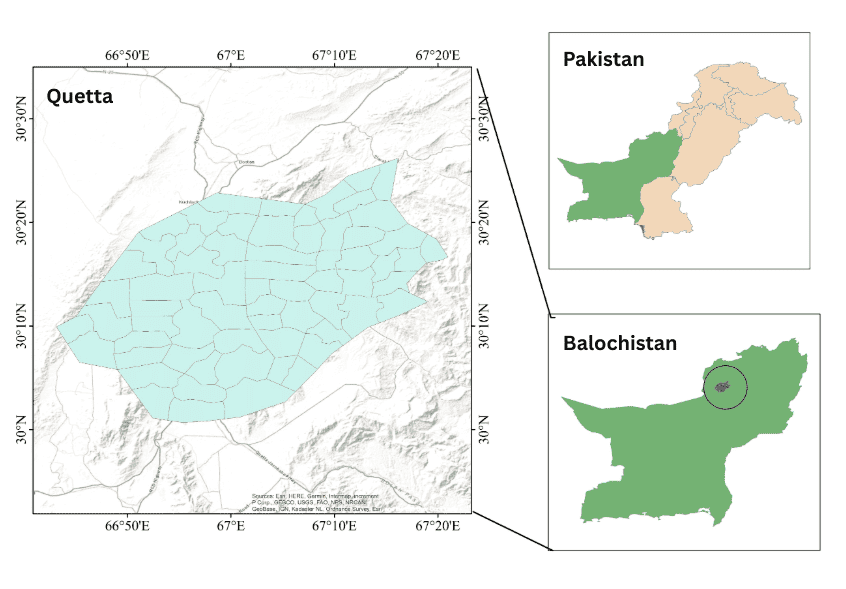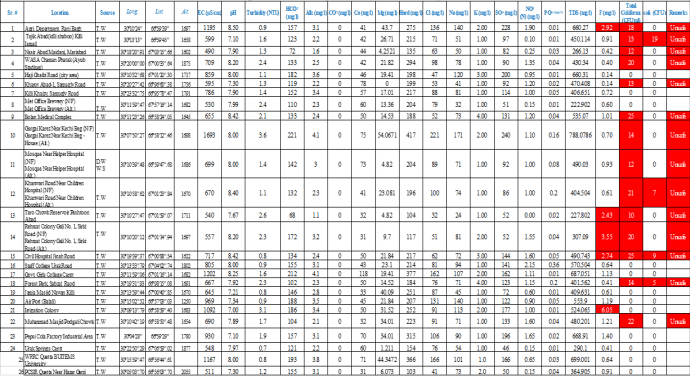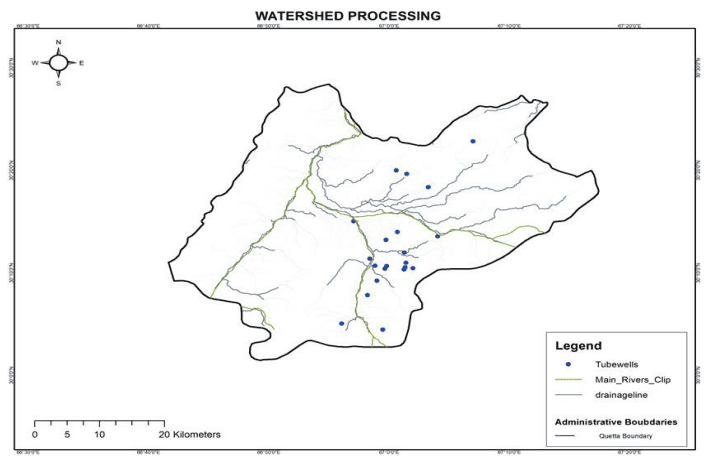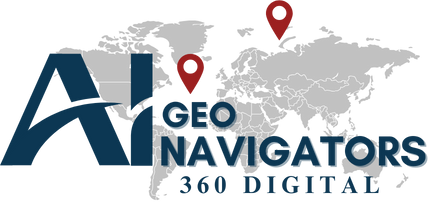Water is one of basic needs and essential for all living things to stay alive, such as, human beings, animals, birds and plants all need water. But a standard quality of water for this particular need is necessary and crucial to be measured before use. Water Quality can be defined as the chemical, physical and biological characteristics of water, usually in respect to its suitability for a designated use.
Water can be used for recreation, drinking, fisheries, agriculture or industry each of these designated uses has different defined chemical, physical and biological standards necessary to support that use. For example, there are high standards required for water to be used for drinking or swimming compared to that used in agriculture or industry.
Water quality analysis is required for monitoring purpose.
- To check whether the water quality is in compliance with the standards, and hence, suitable or not for the designated use.
- To monitor the efficiency of a system, working for water quality maintenance
- To check whether up gradation / change of an existing system is required and to decide what changes should take place.
- To monitor whether water quality is in compliance with rules and regulations. Water quality analysis is of extremely necessary in the sectors of Public Health (especially for drinking water) Industrial use.
Why We Conduct Water Access & Quality Analysis in Quetta Balochistan
Capital city of Balochistan, Quetta, towards northwest, connects Pakistan with Afghanistan. With a population of around 2.2 million, according to census 2017, In Quetta, like much of the province, the underground water level has gone down to 800 feet and sinking a private tube well cost at least Rs1 million but there is no guarantee that this tube well will work permanently so the solution is going even deeper which could push the cost of a tube well Quetta is not only the trade hub between Pakistan and Afghanistan, it is also known as the ‘fruit garden’ given the scattered fruit orchards on outskirts of the city. Currently, with a rapid increase in population, rampant urbanization and influx of migrants after Afghan war have caused the people of Quetta suffer from severe water scarcity. On the other hand, government seems inactive in making policies to resolve this grave issue.

- Balochistan is facing a serious issue of water scarcity. Quetta with largest population is on high risk. (Mapping of groundwater productivity potential with machine learning algorithms A study in the provincial capital of Balochistan, Pakistan).
- Water Quality (chemical content) as the water level is declining the quality of water is also badly affected and the amount of chemical content is increasing.
- Water access Due to large number of tub well installation and lack of water harvesting methods leads to water access issues.
HOW identifying areas with limited access, poor water quality, and changing patterns over time?
GIS helps to find and locate the reservoir of water in the surface of the earth, it helps them to quickly locate the water reservoir with the image reflection methods and rays, after getting result in the GIS software, the engineers can make the strategy according to the situations. GIS is a set of tools that allow for the processing of spatial data into information. This set of tools is open ended, but will include data input, data storage, data manipulation, and a reporting system.
The hydrogeological process has a connection with the GIS because many engineer’s scientists and hydrogeological researchers uses GIS software to find out the accurate location of water reservoir below the surface of the earth. In the hydrological processing the engineers took the reflection data from the GIS software and interpret it into the useful method to find out the solutions of the problems that are faced by the engineers. Creating a hydrologic model using these GIS tools allows the modeler to represent the flow of runoff across the surface during and after a storm. GIS is also being combined with hydrologic modeling in the area of watershed delineation.
A GIS software is used in different areas where the researchers face the hydrological problems and they cannot easily tackle the situation at the moment. It was used when the researchers have to find out the targeted zones, run off computation, and to estimate the soil moisture content. The GIS software and its methods help out the researchers to minimize the efforts that are applicable for the finding of any hydrological issue.
The Drinking Water Quality Status in Balochistan Pakistan
Water is extremely important for human survival and economic development globally. The largest province of Pakistan. Balochistan. is facing drought condition, water scarcity and Quality issue which is badly affected community livelihood and health. Drinking water contaminations with pathogenic microorganism are one of the extreme threats to human health, especially in developing countries.
The present study reveals the current condition of drinking water quality, presence of pathogenic microorganisms, physiochemical properties and its effect on public health in Balochistan Province, Pakistan. The prime objective of this study is to examine drinking water contamination in various areas of Balochistan province. Due to alarming growth of population, prompt industrialization, improper monument of sewage disposal the water quality is being deteriorated.
Groundwater Quality Monitoring In Balochistan Pakistan
Groundwater quality monitoring is important in an arid region like Balochistan province, Pakistan. This province is characterized by lack of recharge, high evaporation rate coupled with increasing withdrawal from aquifers leading to water scarcity situation. Human activities like improper disposal of municipal and industrial effluents and indiscriminate applications of agro chemicals in agriculture are the main factors contributing to the deterioration of water quality.
Tube Well Location and Quality Data of Quetta City
Tube wells are important adaptation technology measures for providing a domestic water supply during times of water shortages and drought. They extract freshwater from subsurface or deeper groundwater aquifers for over project we collect data of water quality and tube well location for Pakistan Council of Research in Water Resources (PCRWR).

Drainage lines and points of Quetta City and Tube Well Location
This map illustrates the terrain morphology of Quetta city, focusing specifically on natural drainage patterns and existing tube well locations. The delineated drainage lines and points represent how water naturally flows through the city based on topographic features. These lines indicate pathways where runoff and storm water accumulate and discharge during rainfall or seasonal water flow.
Additionally, the mapped tube well locations reveal a noticeable lack of planning in their installation. Several tube wells appear to be sited either too close to natural drainage paths or in low-lying areas susceptible to waterlogging and contamination. This raises concerns regarding the sustainability and safety of groundwater extraction in Quetta. Improper placement can lead to problems such as:
- Reduced groundwater recharge,
- Mixing of surface runoff with groundwater sources,
- Inefficient water extraction,
- Contamination risks, especially in densely populated or low-drainage areas.
This spatial analysis highlights the need for hydrogeological planning before installing tube wells and suggests that GIS-based assessments should guide future water infrastructure development in the city.

Electrical Conductivity value in Tube Well Location Quetta City
Electrical conductivity measures the ability of water to conduct an electrical Current. The WHO recommended drinking water conductivity is 200 to 800 micro-Siemens per centimeter (µS/cm).It can tell as how much dissolved substances, chemicals, and minerals are present in the water. Higher amounts of these impurities will lead to a higher conductivity Pure water is not a good conductor of electric current Ruther’s a good insulator. Increase in ions concentration enhances the electrical conductivity of water. The rea
son that the conductivity of water is important is because Excess ions contributing to higher conductivity can cause harm to household plumbing and water heaters through chemical buildup or deterioration; it can also be harmful to human and animal health if consumption occurs over extended time periods.

PH is really a measure of the relative amount of free hydrogen and hydroxyl ions in the water. Water that has more free hydrogen ions is acidic, whereas water that has more free hydroxyl ions is basic. Since pH can be affected by chemicals in the water, pH is an important indicator of water that is changing chemically. Groundwater flows through rocks and soil that can affect the water’s pH level. For example, contact with sandstone results in a nearly neutral pH between 6.5 and 7.5.
Limestone, on the other hand, can result in an alkaline pH of 8.5.Soils contain minerals and other substances that affect groundwater ph. Decaying organic matter in soils causes pH levels in groundwater to drop as low as 4.0. That pH level is well below the recommended 6.5 to 7.5 pH for drinking water. Human-induced pollution affects groundwater pH as well. For example, runoff from shale and coal mining contains iron sulfide, which can result in pH readings as low as 2.
PH value in Tube Well Location Quetta city
PH is really a measure of the relative amount of free hydrogen and hydroxyl ions in the water. Water that has more free hydrogen ions is acidic, whereas water that has more free hydroxyl ions is basic. Since pH can be affected by chemicals in the water, pH is an important indicator of water that is changing chemically. Groundwater flows through rocks and soil that can affect the water’s pH level. For example, contact with sandstone results in a nearly neutral pH between 6.5 and 7.5.
Limestone, on the other hand, can result in an alkaline pH of 8.5.Soils contain minerals and other substances that affect groundwater ph. Decaying organic matter in soils cause’s pH levels in groundwater to drop as low as 4.0. That pH level is well below the recommended 6.5 to 7.5 pH for drinking water. Human-induced pollution affects groundwater pH as well. For example, runoff from shale and coal mining contains iron sulfide, which can result in pH readings as low as 2.

Calcium value in Tube Well Location Quetta city
Calcium is naturally present in water. It may dissolve from rocks such as limestone, marble, calcite, dolomite, gypsum, fluorite and apatite. Calcium is a determinant of water hardness, because it can be found in water as Ca2+ ions. Magnesium is the other hardness determinant. Calcium is a dietary mineral that is present in the human body in amounts of about 1.2 kg.
No other element is more abundant in the body. Calcium phosphate is a supporting substance, and it causes bone and tooth growth, together with vitamin D. Calcium is also present in muscle tissue and in the blood. It is required for cell membrane development and cell division, and it is partially responsible for muscle contractions and blood clotting.
Calcium regulates membrane activity, it assists nerve impulse transfer and hormone release, stabilizes the pH of the body, and is an essential part of conception. In order to stimulate these body functions a daily intake of about 1000 mg of calcium is recommended for adults. There is also some evidence that calcium and magnesium in drinking water may help protect against gastric, colon, rectal cancer, and pancreatic cancer, and that magnesium may help protect against esophageal and ovarian cancer.
Hard water may also serve a protective role against an atherosclerosis in children and teens. WHO recommended Below 75 mg/L – is generally considered soft. 76 to 150 mg/L – moderately hard. 151 to 300 mg/L-hard. More than 300 mg/-very hard.

Magnesium value in Tube Well Location Quetta city
Calcium and magnesium are found in ground water that has come in contact with certain rocks and minerals, especially limestone and gypsum. When these materials are dissolved, they release calcium and magnesium. Magnesium compounds are usually removed from water, because of the role magnesium plays in water hardness.
Human body contains about 25 g of magnesium, of which 60% is present in the bones and 40% is present in muscles and other tissue. It is a dietary mineral for humans, one of the micro elements that are responsible for membrane function, nerve stimulant transmission, muscle contraction, protein construction and DNA replication.

Hardness value in Tube Well Location Quetta city
Hard water is water that has high mineral content (in contrast with “soft water”). Hard water is formed when water percolates through deposits of limestone, chalk or gypsum, which are largely made up of calcium and magnesium carbonates, bicarbonates and sulfates.
Hard drinking water may have moderate health benefits. It can pose critical problems in industrial settings, where water hardness is monitored to avoid costly breakdowns in boilers, cooling towers, and other equipment that handles water.
In domestic settings, hard water is often indicated by a lack of foam formation when soap is agitated in water, and by the formation of lime scale in kettles and water heaters. Wherever water hardness is a concern, water softening is commonly used to reduce hard water’s adverse effects. The World Health Organization says that “there does not appear to be any convincing evidence that water hardness causes adverse health effects in humans”.
WHO is classified as soft; 61 to 120 mg/L as moderately hard; 121 to 180 mg/L as hard and more than 180 mg/L as very hard. The hard water is much usable for cleaning purposes in homes.



No responses yet